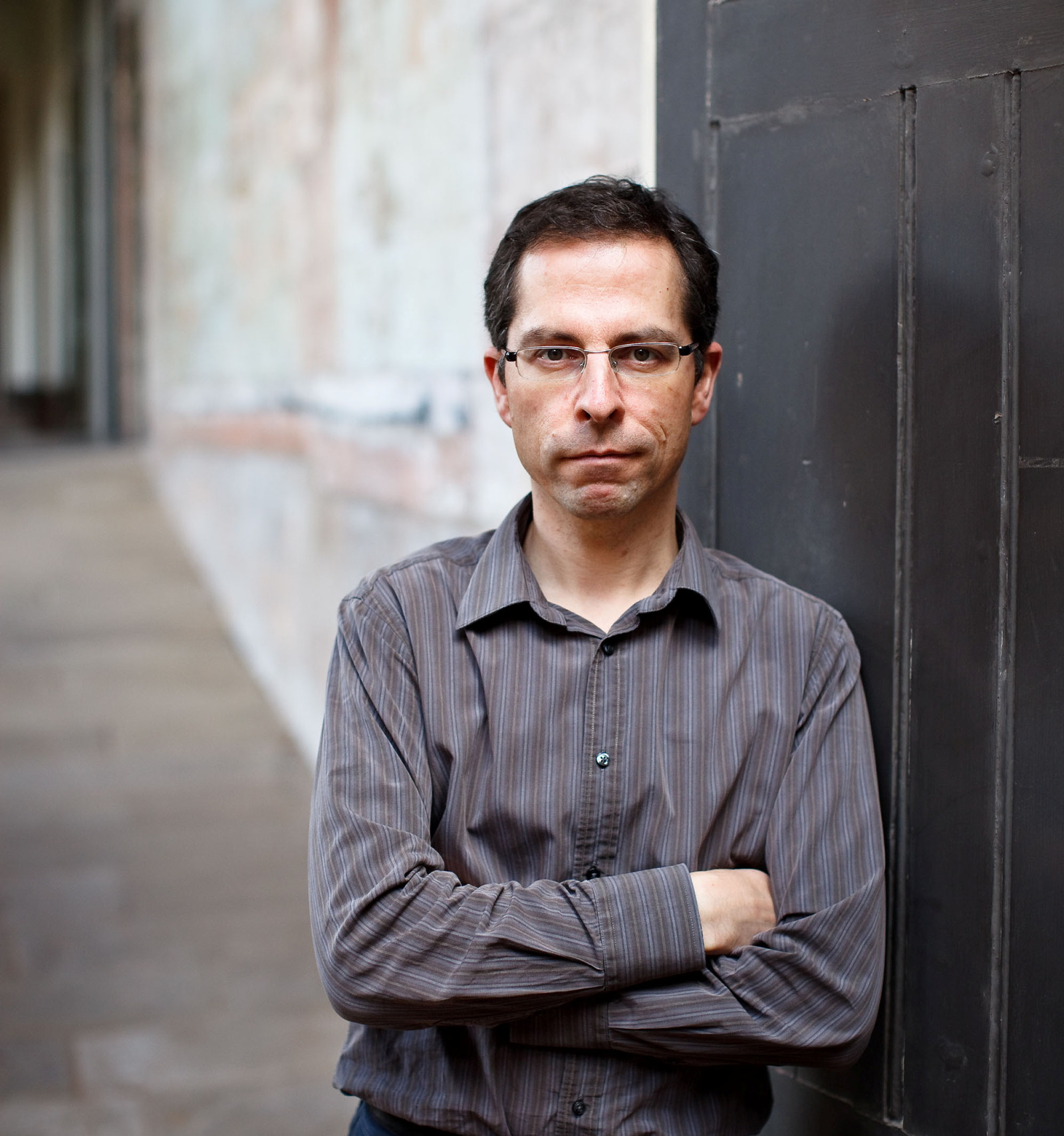Sekers Fabrics: ‘Australian Artists Originals’
In January 1963, Sydney-based firm Sekers Fabrics (also known as Sekers Silks) launched ‘Australian Artists Originals’, a range of furnishing textiles, at the ‘Art in décor’ exhibition at the Dominion Art Gallery.
The fabrics were designed by ten contemporary Australian artists and exhibited alongside the original artworks. The artists were Judy Cassab, John Coburn, Russell Drysdale, Cedric Flower, Donald Friend, James Gleeson, Elaine Haxton, Clement Meadmore, John Olsen and Ian van Wieringen.
An article in Woman’s Day magazine in January 1963 declared that ‘art-loving homemakers, who could never afford to own original paintings by famous artists … can now turn fabric connoisseurs. They’ll be able to curtain their windows, upholster their furniture, and cover their cushions in fabrics designed by these artists’. Each design was available in a number of colourways.
The Australian branch of Sekers Silks was operated from 1949 by Hungarian émigrés Otto ‘Andrew’ and Vera Kaldor. The Kaldors had been in the textile trade in Europe in the 1930s and were friends of Nicholas (later Sir Nicholas) ‘Miki’ Sekers, the founder of the parent Sekers company in England in 1938.
The ‘Australian Artists Originals’ range was a departure for the Sekers label, which until then usually sourced designs from Europe. The artists were selected by the Kaldors’ son, John, now better known for his collection and sponsorship of international contemporary art. John Kaldor trained in textile design in Europe during the 1950s and after working for a time in the industry, returned to Sekers Silks with his parents in the early 1960s. He proposed the idea for the 'Australian Artists Originals' range and then managed the process– after the selected artists produced their designs, John Kaldor styled all the textiles and curated the original exhibition. The textiles were printed by the Kanebo company in Japan.
‘Art in Décor’ exhibition for Sekers Fabrics, January 1963
View of the ‘Art in Décor’ exhibition featuring Sekers Fabrics’ new range of artist-designed textiles, Dominion Art Gallery, Sydney, January 1963.
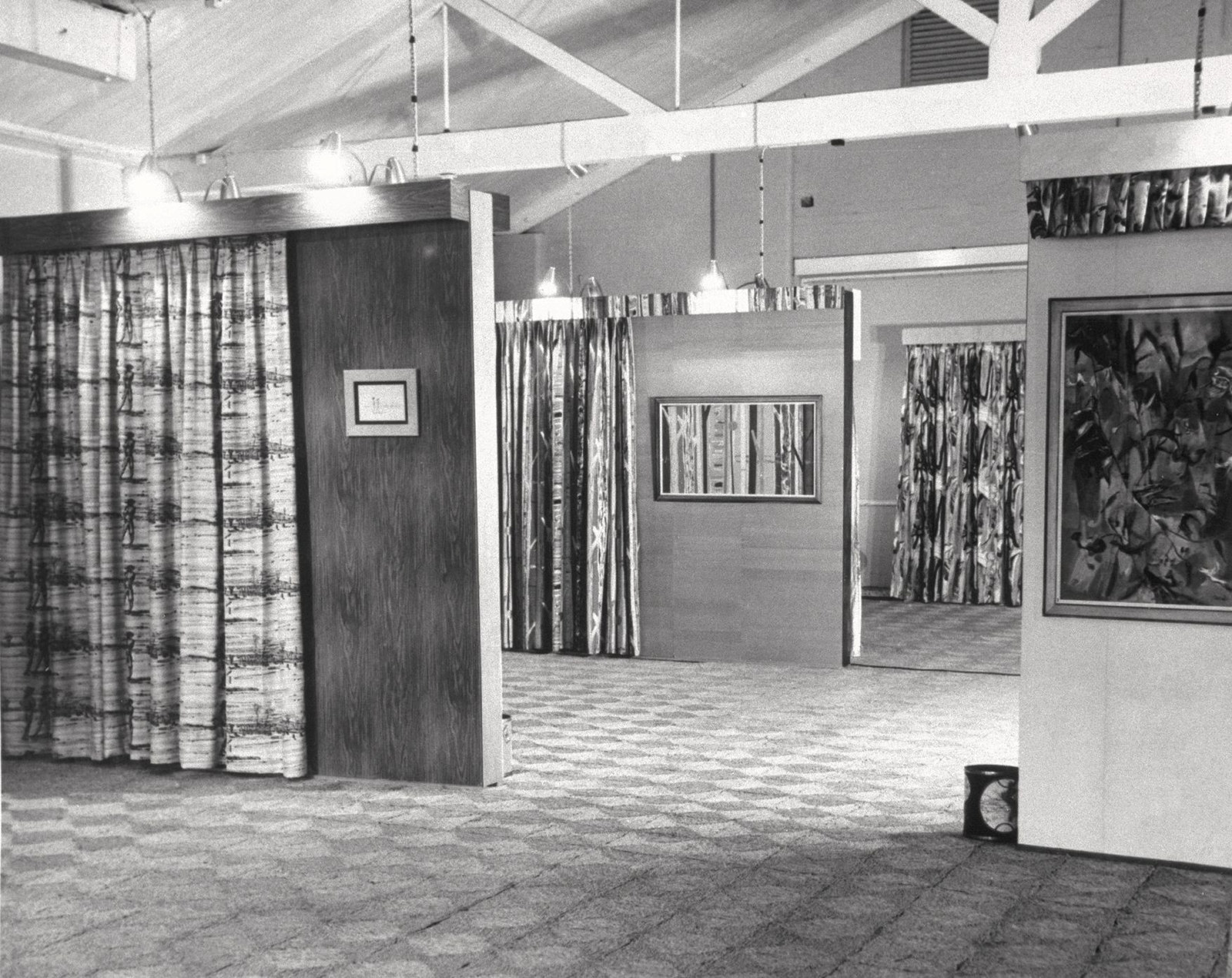
Photo © John Kaldor.
The ‘Art in Décor’ exhibition ran from 17-26 January 1963 and then moved to the Museum of Modern Art and Design in Melbourne from 6-21 February 1963. Original art works were featured side-by-side with the finished textiles. Russell Drysdale’s art work ‘Figures in Landscape’ is pictured at front left alongside curtains using his design, at middle left is Elaine Haxton’s ‘Golden Barks’, at rear is John Olsen’s ‘Marine Encounter’ and at front right is Judy Cassab’s ‘Tiger Lillies’.
Curtain, ‘Golden Barks’ by Elaine Haxton
Curtain, ‘Golden Barks’ design by Elaine Haxton for John Kaldor Sekers Fabrics, Sydney; printed by Kanebo Japan, c1963, cotton.
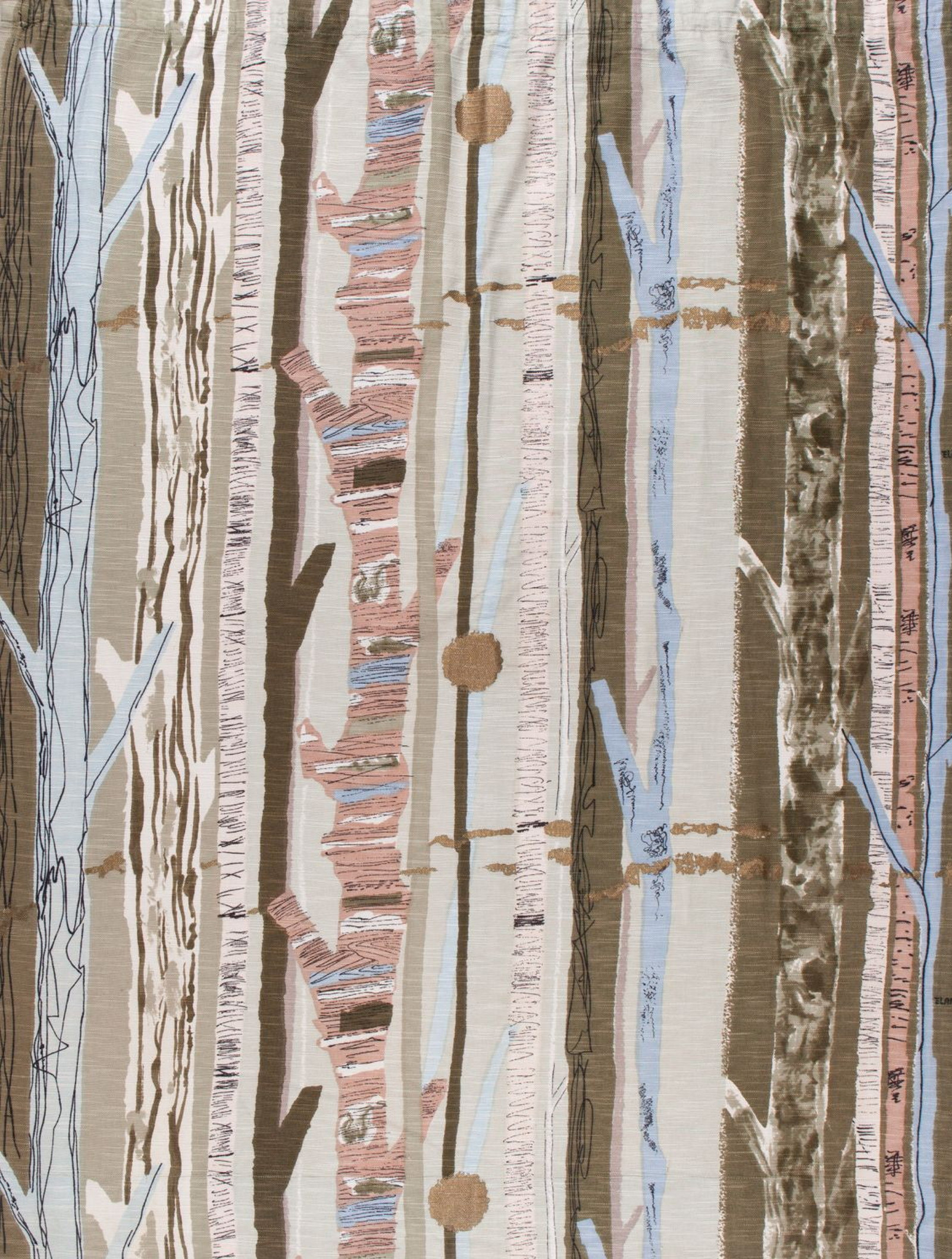
Photograph (c) Jamie North. Caroline Simpson Library & Research Collection.
The design of densely packed trees, almost abstract in form, was likely derived from the bush surrounding Elaine Haxton’s (1909-1999) Clareville home on the shores of Pittwater. The split-level house on a steep site was designed for Haxton and her husband Richard Foot in 1949 by architect Arthur Baldwinson. Haxton is quoted as saying: “The house is mostly glass and wherever I am in the house I can see out. There are lots of trees and birds and changing light so I can follow the passage of the sun all day long.” (Paul Coombes, Elaine Haxton: a biography achievements in paint & print, Communication Programs, Sydney, c1990).
Haxton’s art was very versatile: as well as paintings and drawings, she produced numerous murals, costumes for ballet and theatre as well as theatre sets. The tightly packed trees on a flat plane close to the viewer gives the impression that ‘Golden Barks’ is a backdrop to a theatrical stage production.
Curtain, ‘Billabong’ by John Coburn
Curtain, ‘Billabong’ design by John Coburn for John Kaldor Sekers Fabrics, Sydney; printed by Kanebo Japan, c1963, cotton.
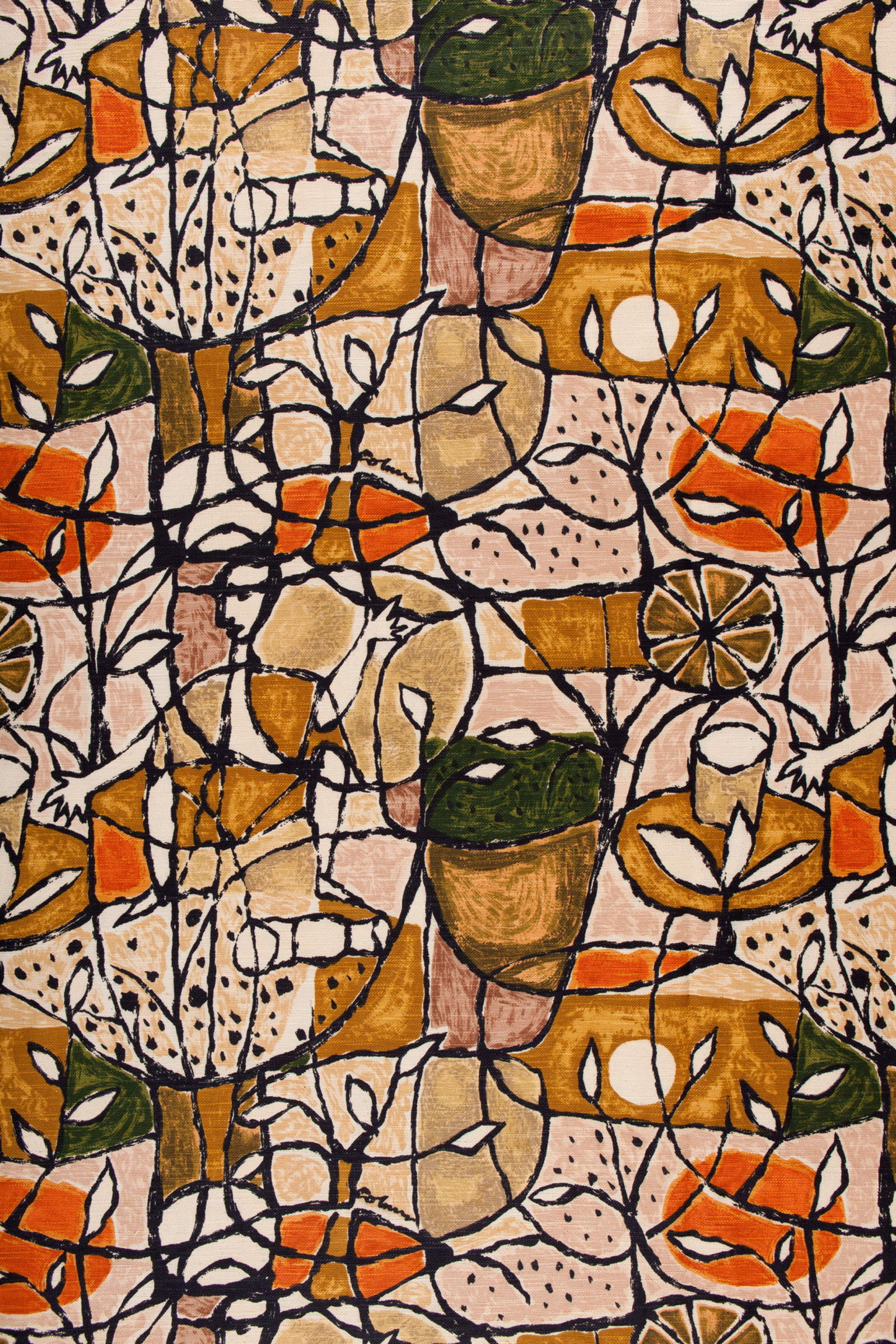
Photograph (c) Jamie North. Caroline Simpson Library & Research Collection.
John Coburn (1925-2006) lived for a time as a child in Western Queensland and in the early 1960s flew over the Western Desert, influencing a series of his art works on a desert theme, which likely included the design ‘Billabong’. At the time of this design around 1962, Coburn’s style had become looser, due at least in part to a move to a larger studio which according to Coburn gave him more space to experiment and work. Just two to three years later Coburn was to move to his more familiar ‘hard-edge’ style with flat areas of colour and often completely abstracted forms.
Textile length, ‘Terrace houses’ by Cedric Flower
Textile length, ‘Terrace houses’ design by Cedric Flower for John Kaldor Sekers Fabrics, Sydney; printed by Kanebo Japan, c1963, cotton.
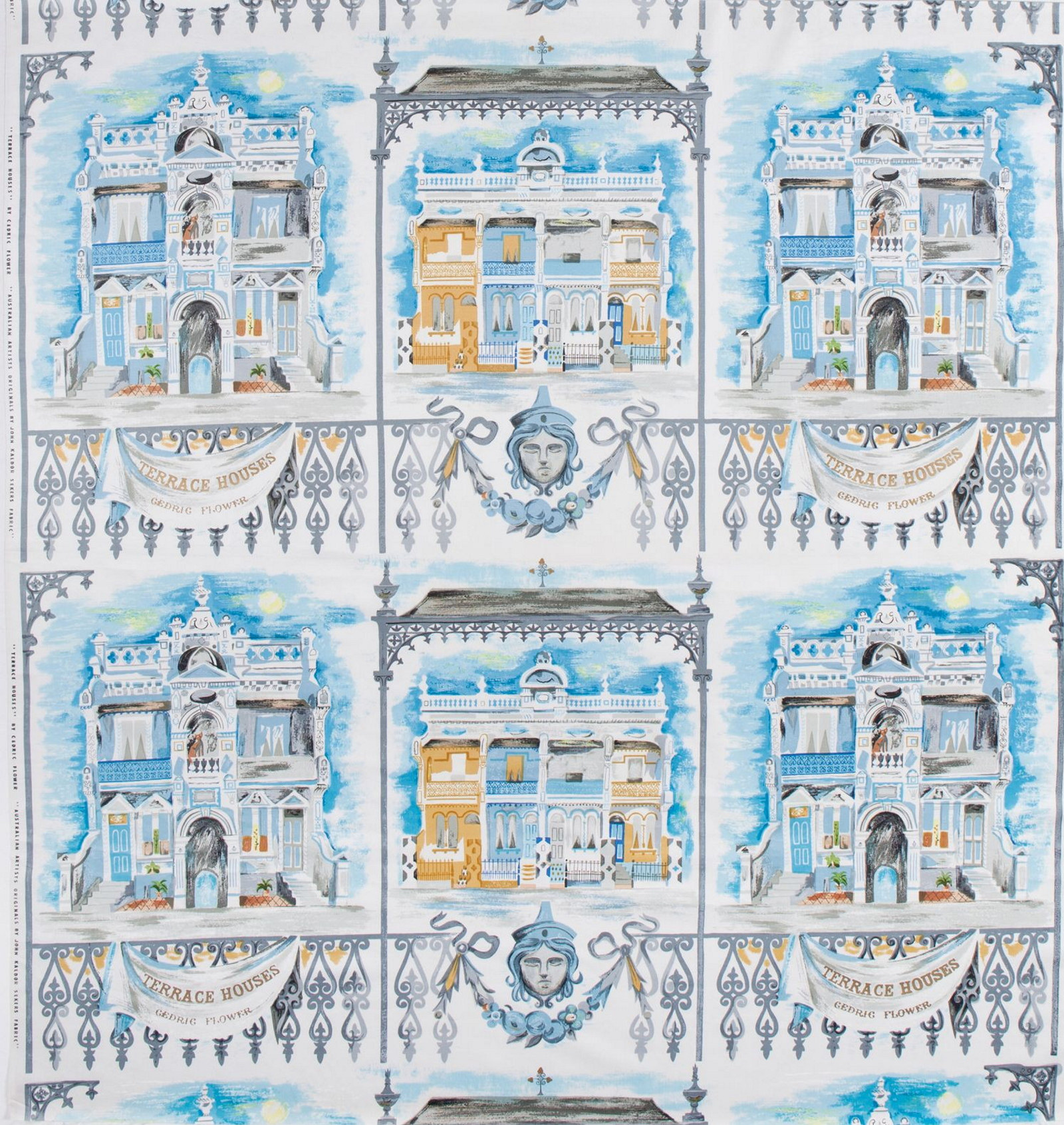
Photograph (c) Jamie North. Caroline Simpson Library & Research Collection.
Cedric Flower (1920-2000), illustrator, author, set designer and painter, was renowned for his depiction of historic buildings, particularly terrace houses. In 1962, the same year Flower designed the 'Terrace Houses' textile, he held a solo exhibition in Sydney called 'Stage Designs Sydney Terraces'. The show featured 38 works of which 27 depicted terraces including a number in Paddington, Flower's home for around 40 years. Flower’s interest in historic buildings went beyond art - he was a Councillor and then Vice President of the National Trust of Australia (NSW) during the 1960s and 70s and also Chair of the Trust's Historic Buildings Committee (1966-69). According to Flower’s obituary, 'his work was decorative and whimsical. It displayed delicate line work, lightness of spirit and a striking use of colour.' ('Cedric Flower OAM', by Tom Flower, Sydney Morning Herald, 18 August 2000, p.35).
Curtain, ‘Square moon’ by Ian van Wieringen
Curtain, ‘Square moon’ design by Ian van Wieringen for John Kaldor Sekers Fabrics, Sydney; printed by Kanebo Japan, c1963, cotton.
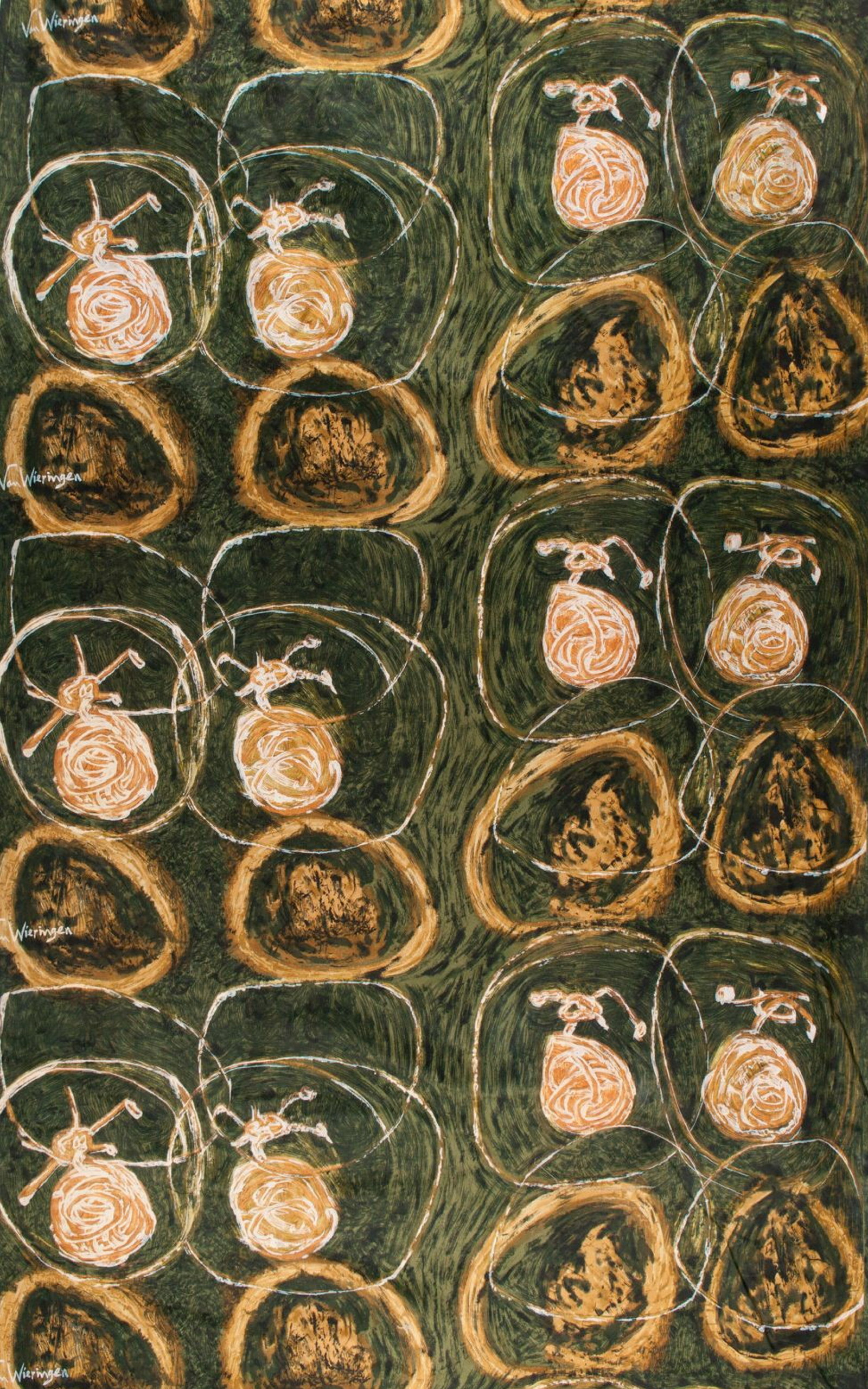
Photograph (c) Jamie North. Caroline Simpson Library & Research Collection.
Ian van Wieringen was the youngest artist, at just 18 years of age, invited by John Kaldor to participate in the ‘Australian Artists Originals’ series. According to art critic Daniel Thomas, Kaldor had until the early 1960s been more interested in collecting classical and medieval antiquities rather than contemporary art. His first attraction to painting had come from seeing the work of van Wieringen at Sydney’s open air Waratah Festival exhibition.
Curtain, ‘Marine Encounter’ by John Olsen
Curtain, ‘Marine Encounter’ design by John Olsen for John Kaldor Sekers Fabrics, Sydney; printed by Kanebo Japan, c1963, cotton.
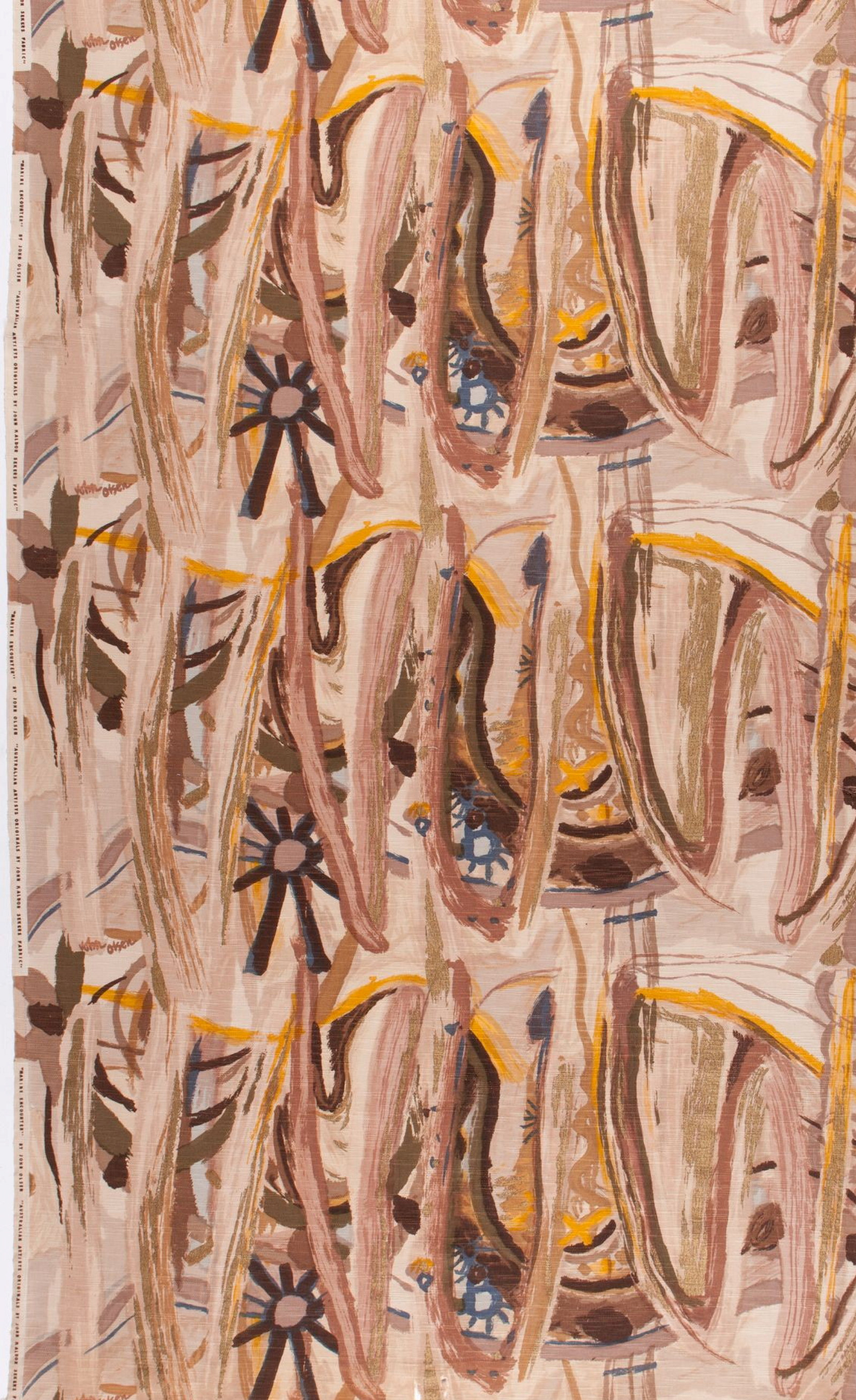
Photograph (c) Jamie North. Caroline Simpson Library & Research Collection.
At the time he designed ‘Marine Encounter’, John Olsen produced some of his best known works of art including the ‘You Beaut Country’ series. By the early 60s, Olsen had developed a new visual language for the depiction of the Australian landscape – his ‘landscapes of the mind’ involved a total immersion into the environment in which animals, plants, space, light and water all inhabited the one plane. Olsen uses this method in his design ‘Marine encounter’, this time depicting the sea or possibly Sydney Harbour, one his favourite subjects. The textile maintains the painterly effects of the swirling water, the sun reflected in water and sea plants or creatures.
Textile length, ‘Figures in landscape’ by Russell Drysdale
Textile length, ‘Figures in landscape’ design by Russell Drysdale for John Kaldor Sekers Fabrics, Sydney; printed by Kanebo Japan, c1963, cotton.
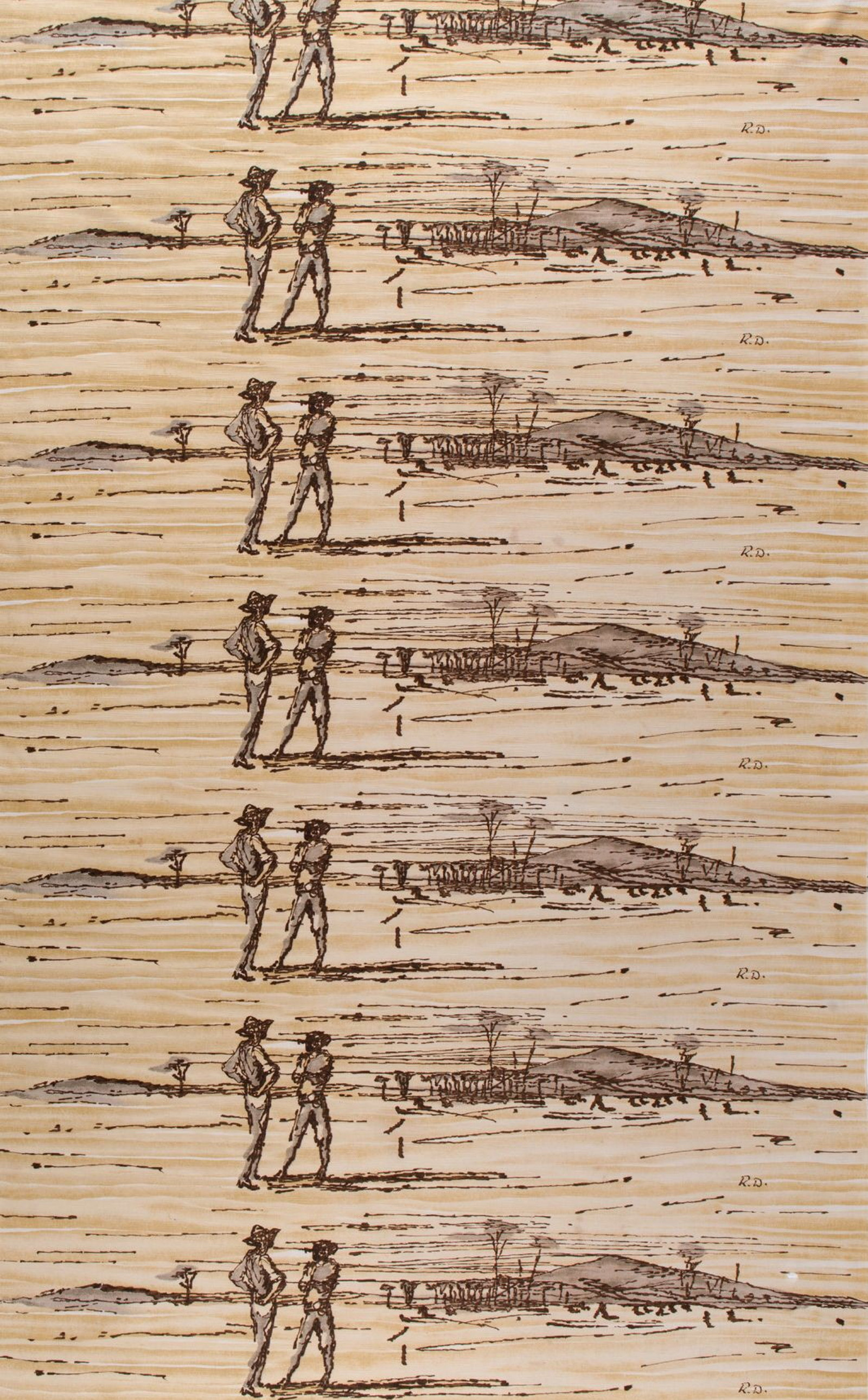
Photograph (c) Jamie North. Caroline Simpson Library & Research Collection.
The subject matter for Russell Drysdale’s (1912-1981) design was probably derived from his trip to The Kimberley and Central Desert areas in late 1958. From this trip Drysdale produced around 50 drawings, a number of which were published in the 1962 book, Journey Among Men, with text by Jock Marshall. The drawings have in common a languid, informality, with Drysdale capturing natural poses of the drovers of the area, many of whom were Aboriginal.
Cushion, ‘Cave painting’ by Donald Friend
Cushion, ‘Cave painting’ design by Donald Friend for John Kaldor Sekers Fabrics, Sydney; printed by Kanebo Japan, c1963, cotton.
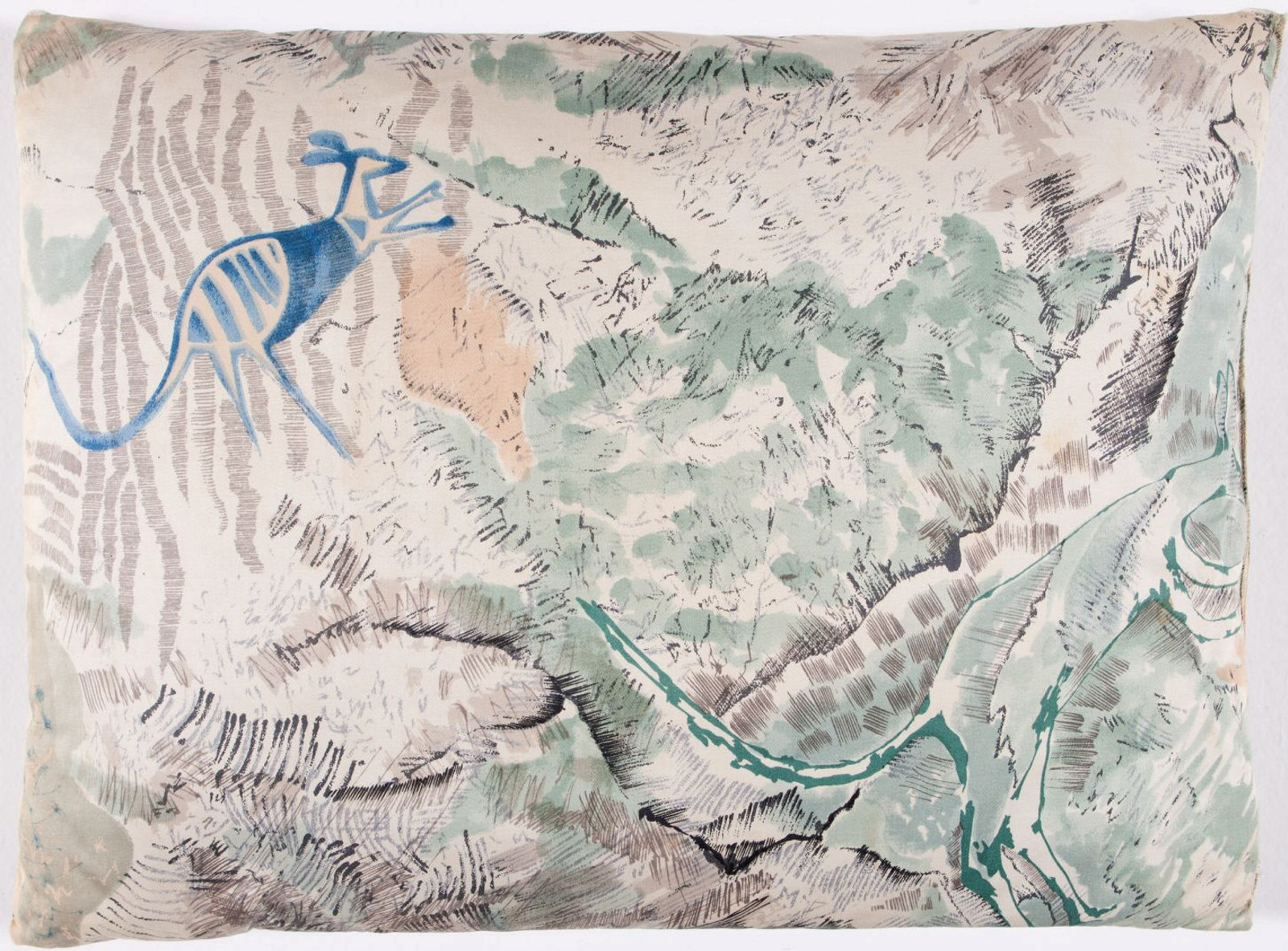
Photograph (c) Jamie North. Caroline Simpson Library & Research Collection.
Donald Friend (1914-1989) was an artist and writer and in 1962 had just returned from five years in Ceylon (Sri Lanka). He was invited to Yulgilbar Station in the Grafton district in October 1962 where he may have sourced the subject matter for ‘Cave painting’. Certainly, the style of his design with kangaroos merging into and out of the cross-hatched background was in keeping with Friend's paintings exhibited the following month from Sri Lanka and New Guinea – art critic Robert Hughes described how “the forms shift constantly from pattern to illusion, a man becomes a tree, a bird turns into a mask, a constant flux and movement of appearances is implied.” (Robert Hughes, Donald Friend, Edwards & Shaw, Sydney, 1965).
More from Caroline Simpson Library
Collections
Millions of items, infinite stories

Collections Series
The MHNSW Collection Series explores the many stories of home, garden, history and life celebrated in these expansive and diverse collections
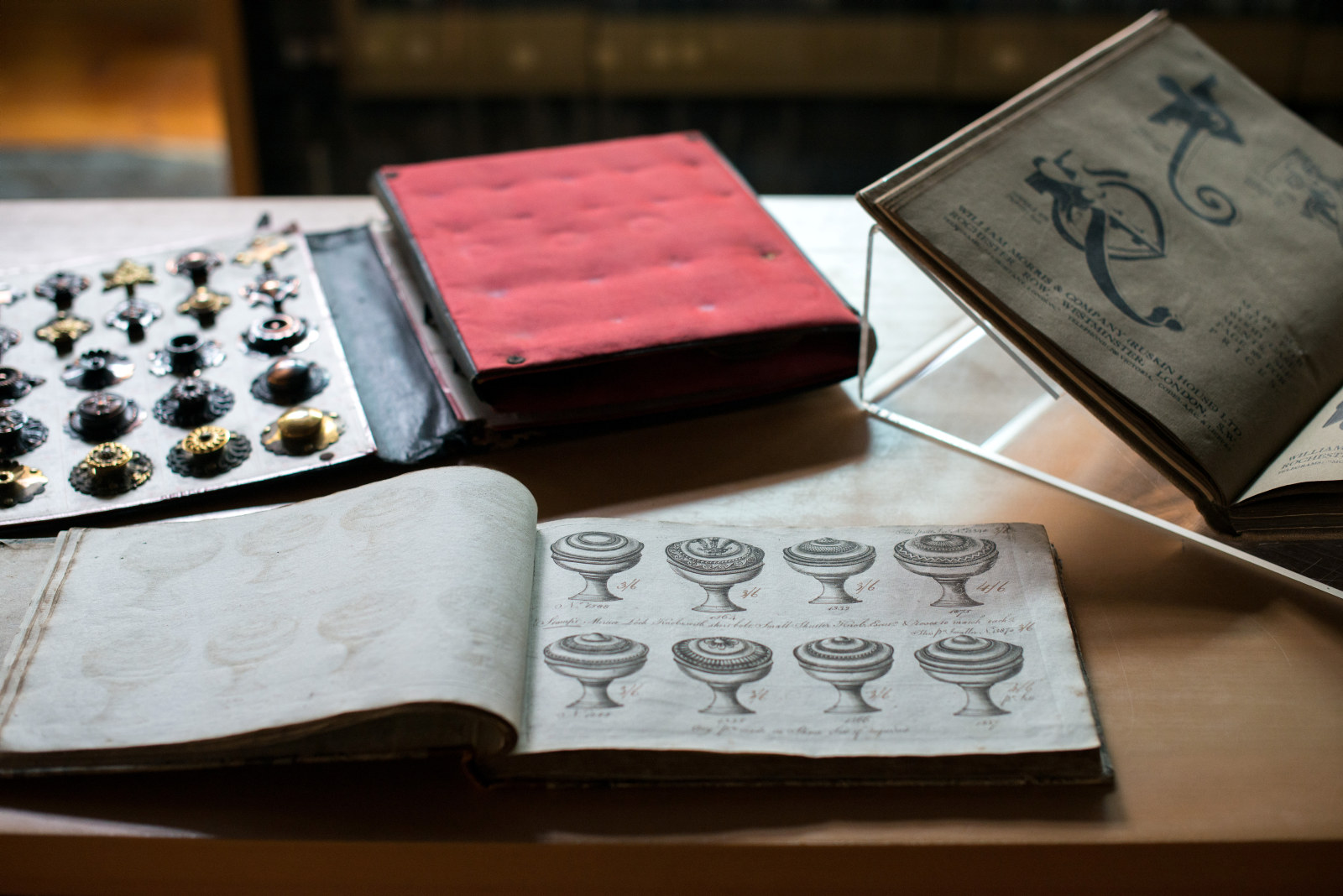
Past event
Members Hour: Caroline Simpson Library
Experience Members Hour at Caroline Simpson Library
The Mint, 10 Macquarie Street, Sydney NSW 2000
Wednesday 29 May 10am–11am
Published on
